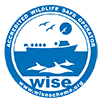Get Connected to Your Kayak
Good connectivity in a kayak refers to the effective and synchronized interaction between the kayaker, the kayak, and the surrounding water environment. This connection is essential for safety, control, maneuverability, and overall enjoyment while kayaking. Here’s why good connectivity is important:
Safety
A strong connection with the kayak and the water is vital for your safety on the water. Being in tune with the kayak’s movements and the water conditions allows you to react quickly to changes, potential hazards, and unexpected situations. This awareness can prevent accidents and capsize situations, ensuring that you stay in control and minimize risks.
Control and Manoeuvrability
When you’re well-connected to your kayak, you can effectively control its movements. This includes turning, changing direction, and navigating around obstacles. Understanding how your paddle strokes, body movements, and kayak’s response interact empowers you to execute maneuvers with precision and confidence.
Balance and Stability
Good connectivity helps you maintain balance and stability, especially in challenging water conditions. By sensing the kayak’s balance point and adjusting your body weight accordingly, you can prevent tipping and maintain equilibrium. This is particularly important in rough waters or situations where maintaining stability is key.
Efficient Paddling
Being connected to the kayak allows you to transfer power efficiently from your body to the paddle and, subsequently, to the water. This efficient power transfer maximizes the impact of each stroke, enabling you to paddle with less effort and achieve better speed and control.
Sensory Awareness
Developing a strong connection with the water involves using your senses to read the environment. Feeling the water’s movements, understanding the current, and gauging wind direction help you make informed decisions about your paddling strategy. This sensory awareness enhances your ability to adapt to changing conditions.
Comfort and Intuition
Over time, as you develop good connectivity, you’ll develop an intuitive sense of how the kayak responds to different inputs. This connection becomes almost second nature, allowing you to paddle comfortably and confidently without overthinking each movement.
Advanced Techniques
For more advanced kayaking techniques like rolling, bracing, and surfing waves, good connectivity is crucial. These maneuvers require precise timing, coordination, and an acute sense of the kayak’s position relative to the water. The better your connection, the more effectively you can execute these techniques.
Enjoyment and Immersion
A strong connection with your kayak and the water enhances the overall enjoyment of kayaking. It creates a sense of immersion in the environment and a feeling of oneness with the water. This can lead to a meditative and fulfilling experience as you paddle and explore.
To foster good connectivity, practice is essential. Spend time on the water, experiment with different strokes, observe how the kayak responds, and refine your techniques. As you become attuned to the kayak’s behaviour and the water’s nuances, your connectivity will naturally improve. Additionally, seeking guidance from experienced kayakers and instructors can provide valuable insights and accelerate your progress toward achieving strong connectivity in your kayaking endeavours.








